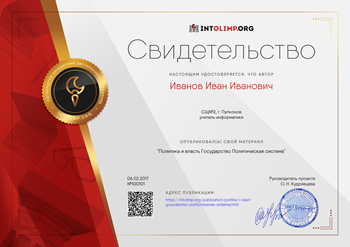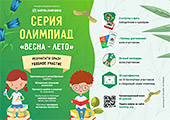| Long- term plan unit: | School: Orazali Zhumabekov secondary school | |||||
| Date: | Teacher name:Suleimenova Zhansaya | |||||
| Grade:8 | Number present : | Absent:- | ||||
| Theme of the lesson : | Magnetism | |||||
| Learning objectives that are achieved at this lesson (Subject Programme reference) |
| |||||
| Lesson objectives | During the lesson, students will be able to 1)Defineimportant concepts about magnetism 2)Apply and understand the properties of magnets 3) Show cooperation on a given task in a group | |||||
| Success criteria | Score 1-5 | |||||
| Language objectives | Are defined for non-language subjects. Define language objectives, including examples of vocabulary and phrases. | |||||
| Values instilled at the on | Electric current-any movement of electric charge carriers, such as subatomic charged particles, ions or holes. Magnetism-phenomenon associated with magnetic fields, which arise from the motion of electric charges. This motion can take many forms. It can be an electric current in a conductor or charged particles moving through space, or it can be the motion of an electron in an atomic orbital. | |||||
| Cross- curricular links | Chemistry, Math | |||||
| ICT skills | Using programme “Cobra” and work with Microsoft Word | |||||
| Previous learning | Magnetic field of Earth | |||||
| Course of the lesson | ||||||
| Planned stages of the lesson | Planned activities at the lesson | Resources | ||||
| Beginning | Good morning students |
| ||||
| Middle | Worm up Activity · Show the students a bar magnet. · Ask them: Have you heard about any magnet which has been formed by using electricity? After students ’response Inform them, yes an iron rod can be made magnet by using electricity. This type of magnet is called electromagnet. · Announce that they will study how electricity can be used to make an electromagnet. Development Activity 1 · Divide the students into groups. · Give them a battery cell, an iron nail (5cm long) a steel nail, a switch, steel pins connecting wires and insulated copper wire. · Draw a circuit diagram on the board. · Ask them to wind an insulated copper wire very closely over the iron nail. Tell them that it makes a coil. · Ask them to attach the connecting wires to the two ends of the coil and connect them to battery cell through a switch. · Ask the students to keep the switch off and bring some steel pins near one end of the nail. Ask: Does the nail attract them? (Expected response: No) · Ask them to turn the switch on and see if the nail attracts the pins now. · Ask them to predict what will happen if the current is switched OFF. · Now ask them to turn the switch OFF to verify their prediction. · Now ask them to repeat the same procedure with a steel nail and find out the difference. · Ask them: What do you conclude from this activity? · After their response tell them that nails can be made electromagnets by passing current through a coil. Iron nail is magnetized temporarily but steel nail is magnetized permanently when placed in a current carrying coil. Activity 2 · Before the activity tell the students that: 1. Electromagnets are used in different devices like telephone, microphone, loud speaker, computer, fax machine, dynamo etc. 2. Dynamo is a mini generator in which a magnet is used to produce electricity. An electrical motor converts electric energy into mechanical energy with the use of a magnet. 3. When current passes through a coil placed in a magnet field, the coil starts rotating. it is an electric motor. · Give each group a battery cell, a disc shaped magnet, two safety pins and pieces of wire. · Ask them to wind the insulated wire to form a coil. · Ask them to take safety pins and bend them with the help of pliers. · Ask them to mount the bent safety pins on a wood block and place the coil between safety pins as shown in figure · Ask them to attach the wires from battery holder to the bent safety pins and place battery cell into the holder. · Ask them to give a spin to the coil gently to get the motor started. By this, it will start rotating. · Tell the students that when a current carrying coil is place in magnetic field, a force acts on it which moves it in and out and the coil rotates. Electric generators and motor work on this relationship between current and magnet force. Activity 3 · Ask the students to identify the devices which use electromagnets. · Ask them to present their findings in class discussion. · Write the names of electromagnetic devices on the board and discuss about it. Conclusion · Magnetic effects are produced in a coil through which electric current is flowing. · The iron nail becomes a temporary magnet when electric current passes through a coil around it. It is called as electromagnet. · When a steel nail is placed inside the current carrying coil, it becomes permanent magnet. · Electromagnets are used in different electrical devices.
| Battery cells, connecting wires, iron nails, pencils, pieces of sand paper, paper clips, insulated copper wire, textbook.
| ||||
| End | Assessment: To assess students understanding, ask the following questions: 1. When an ordinary iron nail is placed inside a current carrying coil, will it become a temporary magnet or a permanent magnet? 2. Which material can be magnetized permanently with the help of electric current? 3. Can we say that magnet compass is an electromagnetic device? 4. How can an iron nail be made a magnet by electric current? 5. Where are electromagnets used?
Homework:List at least seven devices present at their homes in which electromagnets are used.
|
| ||||
| Differentiation –how to do you plan to give more support? How do you plan to challenge the more able learners? | Assessment-how are you planning to check students learning? | Health and safety regulations | ||||
|
|
|
| ||||
| Reflection Were the lesson objectives/learning objectives realistic?
Did all learners achieve the LO?
If not, why?
Did my planned differentiation work well?
Did I stick to timings?
What changes did I make from my plan and why? | Use the space below to reflect on your lesson. Answer the most relevant questions from the box on the left about your lesson | |||||
|
| ||||||
| Summary evaluation
What two things went really well (consider both teaching and learning)? 1:
2:
What two things would have improved the lesson (consider both teaching and learning)? 1:
2:
What have I learned from this lesson about the class or achievements/difficulties of individuals that will inform my next lesson?
| ||||||










